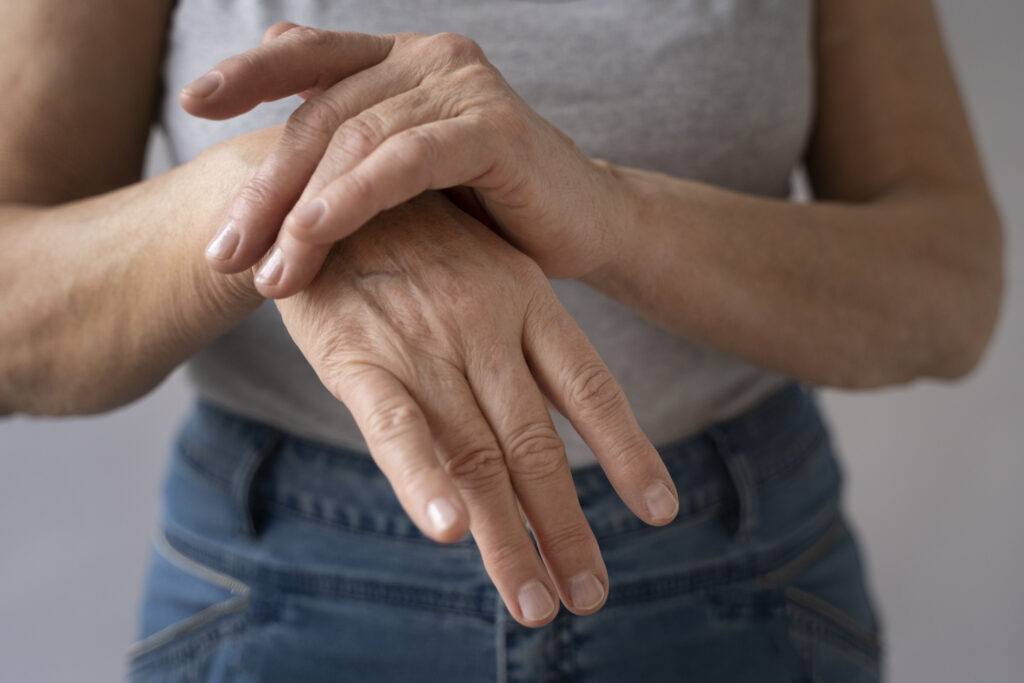Understanding Arthritis: A Comprehensive Guide to Joint Health
Contents
Read DISCLAIMER
Discover the many forms, causes, symptoms, and treatments for arthritis by diving in. This thorough manual provides useful insights into comprehending and efficiently managing joint health.
Introduction with Understanding Arthritis
Millions of people throughout the world suffer with arthritis, a disorder that has a negative influence on joint health and lowers quality of life. With the help of this thorough guide, you’ll gain a greater understanding of arthritis, its many forms, probable causes, typical symptoms, and accessible treatments. This guide seeks to clarify this complicated issue and provide you with useful information, whether you’re looking for information for your own benefit or to help a loved one.

Arthritis is….
A collection of illnesses collectively referred to as arthritis induce joint stiffness and inflammation. Any age or background can be impacted by these diseases. Let’s explore the many angles of arthritis understanding:
1. Types of Arthritis
Osteoarthritis: The most prevalent kind of arthritis, osteoarthritis is frequently linked to age and joint wear-and-tear.
Rheumatoid Arthritis: An autoimmune condition that causes persistent joint inflammation.
Arthritis Caused by Psoriasis: occurs in certain psoriasis sufferers and can have an impact on the skin as well as the joints.
Spondylitis with Ankylosis: primarily affects the spine and can cause stiffness and vertebral fusion.
Gout: A condition where uric acid crystals accumulate in the joints, frequently resulting in abrupt and excruciating pain.
2. Causes and Risk Factors of Arthritis
A mix of genetic, environmental, and behavioral variables can contribute to arthritis. Age, family history, obesity, joint injuries, and gender are some typical risk factors.
3. Symptoms of Arthritis
Depending on the kind of arthritis, the symptoms might differ greatly. Joint discomfort, swelling, stiffness, and a reduced range of motion are typical symptoms, though. Additionally, some forms of arthritis can cause weariness, fever, and changes in the skin.

4. Diagnosis
A medical history, physical examination, imaging tests (X-rays, MRI), and occasionally blood tests to find certain inflammatory markers are used to diagnose arthritis.
5. Treatment Options
Approaches to treating arthritis focus on controlling pain, reducing inflammation, and enhancing joint function. Treatments for arthritis can range from medicine and physical therapy to lifestyle modifications and surgery, depending on the condition’s kind and severity.
6. Lifestyle Modifications
The management of arthritis depends heavily on maintaining a healthy lifestyle. Symptoms can be reduced by regular exercise, eating a balanced diet, and keeping a healthy weight.
7. Medications
Common pharmaceuticals used to treat arthritic symptoms include painkillers, anti-inflammatory drugs, disease-modifying antirheumatic drugs (DMARDs), and biologics.
8. Alternative Therapies
Complementary therapies including massage, acupuncture, and herbal supplements can provide comfort for some people. Before using these methods, you must, however, speak with a medical expert.
9. Surgery
Surgery could be suggested in extreme circumstances. Surgery to replace a joint, such as a hip or knee, can greatly increase mobility and quality of life.
10. Support and Coping Strategies
Living with arthritis may be difficult on a physical and psychological level. Effective coping strategies include joining support groups, using stress-reduction techniques, and getting therapy.

Frequently Asked Questions (FAQs)
Is arthritis only a condition of the elderly?
Arthritis can affect people of all ages, including children. While some types are more prevalent in older adults, others can occur at any age.
Can arthritis be prevented?
While it’s not always preventable, maintaining a healthy lifestyle, staying physically active, and managing your weight can reduce your risk.
Can diet impact arthritis symptoms?
Yes, certain foods can either exacerbate or alleviate arthritis symptoms. Omega-3 fatty acids, for example, found in fatty fish, have anti-inflammatory properties.
What role does exercise play in arthritis management?
Regular, low-impact exercise can help improve joint mobility, strengthen muscles, and reduce pain associated with arthritis.
Can weather affect arthritis symptoms?
Some people with arthritis report that changes in weather conditions, particularly cold and damp weather, can worsen their symptoms.
Is there a cure for arthritis?
While there is no cure for most types of arthritis, effective management strategies can help individuals lead fulfilling lives with reduced pain and improved mobility.
Conclusion
To properly manage and live with arthritis, one must have a thorough understanding of the condition. You will be better able to make decisions regarding your joint health if you investigate the kinds, causes, symptoms, and treatments included in this manual. Keep in mind that proactive management and early intervention may greatly enhance your quality of life and enable you to carry on enjoying the things you like.

[…] Understanding Arthritis: A Comprehensive Guide to Joint Health […]
Hi there, I found your website via Google while searching for a related topic, your website came up, it looks great. I have bookmarked it in my google bookmarks.
Very interesting info!Perfect just what I was searching
for!!
Your article helped me a lot, is there any more related content? Thanks! https://www.binance.com/en-IN/register?ref=UM6SMJM3
Thank you for your sharing. I am worried that I lack creative ideas. It is your article that makes me full of hope. Thank you. But, I have a question, can you help me?
Your point of view caught my eye and was very interesting. Thanks. I have a question for you.
I’m still learning from you, while I’m trying to achieve my goals. I absolutely love reading everything that is posted on your blog.Keep the tips coming. I enjoyed it!
I don’t think the title of your article matches the content lol. Just kidding, mainly because I had some doubts after reading the article.
Hi there, You have done a fantastic job. I will certainly digg it and personally recommend to my friends. I am confident they will be benefited from this web site.
I know this if off topic but I’m looking into starting my own weblog and was curious what all is needed to get setup? I’m assuming having a blog like yours would cost a pretty penny? I’m not very web savvy so I’m not 100 certain. Any suggestions or advice would be greatly appreciated. Cheers
There is evidently a lot to know about this. I assume you made some nice points in features also.
I have fun with, lead to I discovered just what I used to be having a look for. You’ve ended my 4 day lengthy hunt! God Bless you man. Have a great day. Bye